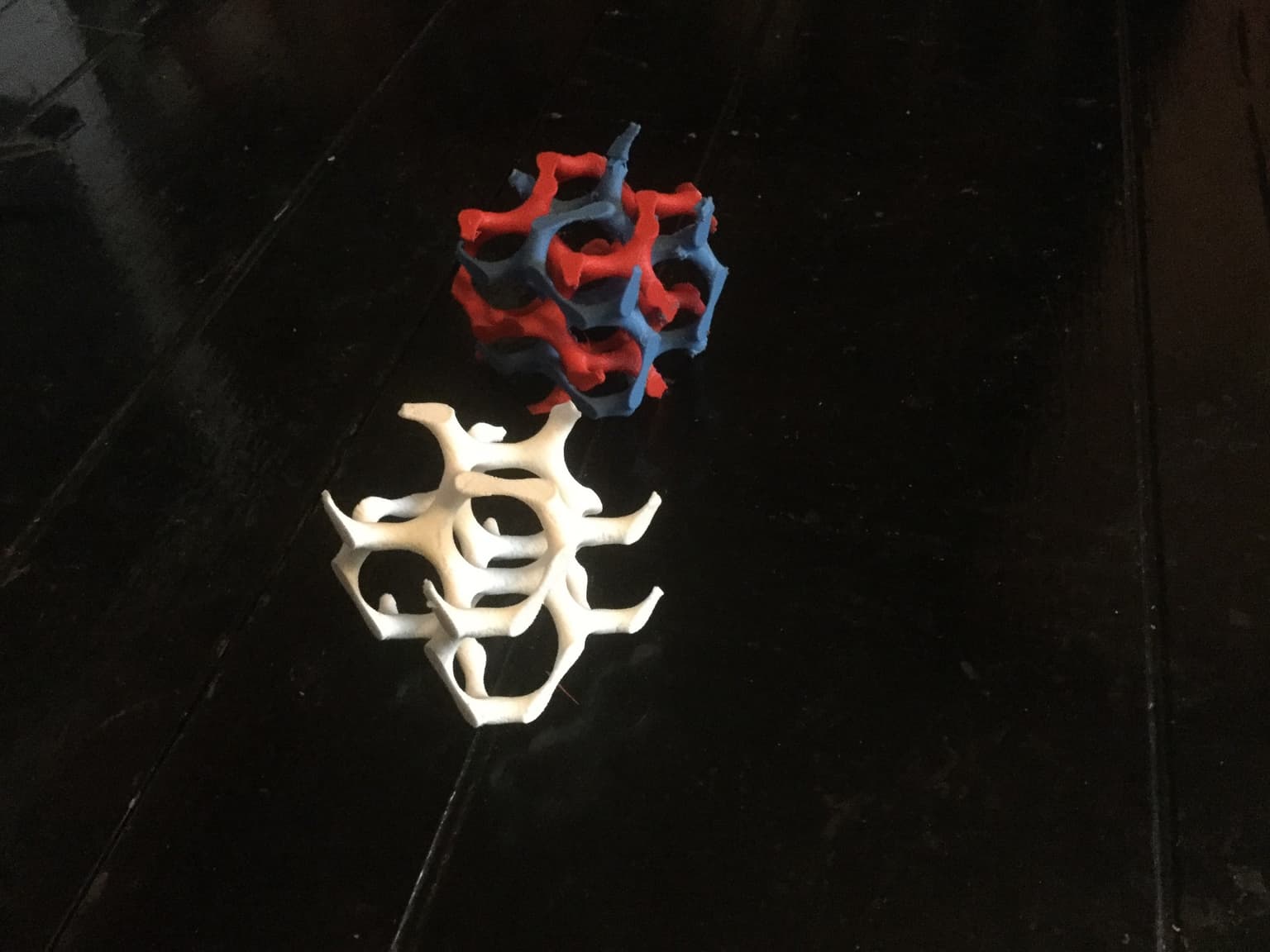2021 Joint Mathematics Meetings
Nicholas Roberts
Artists
Nicholas Roberts
Artist, Post Doc
Unconventional Computing Group, University of West England
Bristol, UK
Statement
Triply Periodic Biogenesis is a series of studies into minimal surfaces and their relationship to the ontogeny of anatomical structures in humans. The 3D surfaces are generated from a parameterization of the gyroid, a triply periodic surface, and 3D printed using PLA. The surfaces of trabecular networks in bones display a tendency towards negative Gaussian curvature, a mean curvature of 0 and a preferred 3 way connectivity at junctions. This lends itself to modelling by gyroid derived surfaces as seen in the white model on the bottom left. On the top right is a pair of entangled but disjoint triply periodic surfaces, with opposite chirality modelling the source and drain aspects of the circulatory system.
Artworks

Triply Periodic Biogenesis
6 x 6 x 6 cm
Polylactic acid
2020